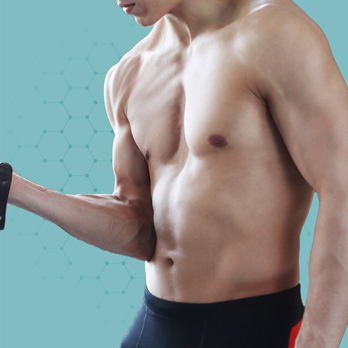Pectus Excavatum: understand the medical condition
Commonly known as “funnel chest,” Pectus Excavatum occurs when the ribs and sternum collapse inward. This depression creates the appearance of a hollow or dent, sometimes accompanied by chest asymmetry.
Possible causes and risk factors
The exact causes of Pectus are not clearly defined, but genetic factors may play a role in its development (studies estimate a hereditary and familial component of 40%(1,2)). Other studies also suggest that imbalances in the embryonic growth of costal cartilage, possibly of vascular origin, may contribute to the formation of Pectus(3,4).
Diagnosis and severity assessment
The diagnosis of a sunken sternum is generally made by a specialist, typically a thoracic surgeon, plastic surgeon, or pediatrician. A physical examination is performed to assess the severity of the chest depression. If in doubt about the symptoms associated with Pectus Excavatum, the doctor can perfect his diagnosis with a battery of physical tests to measure lung capacity (pulmonary functional exploration, VO2 max), or cardiac capacity (electrocardiogram, cardiac MRI).
Functional and psychological impact of Pectus
Functional impact
Cardiac and pulmonary tests help to determine if the chest depression significantly affects the physical condition of patients, particularly in sports practice. In most cases, the physical impact is minor, with little effect on breathing(5) or the heart(6).
Psychological impact
However, funnel chest can cause physical insecurities and low self-esteem in some individuals(7). The visual aspect of Pectus can be perceived as embarrassing, particularly when undressing in public or participating in sports activities.
Pectus, sports, and bodybuilding
Are there any contraindications for sports?
Having a hole in the chest does not prevent people from practicing sports. Apart from very severe cases with proven pulmonary or cardiac impact, the body grows normally, adapts, and allows regular sports practice. Therefore, there is no sports contraindication. However, when removing a shirt in locker rooms or at the pool, the chest particularity often draws attention, especially during adolescence.
This physical difference may lead to questions or even teasing, creating a vicious cycle: mockery results in a loss of self-confidence, reducing the willingness to reveal the body, thus hindering sports participation and limiting muscular and cardio-respiratory capacity. As a result, someone who does not practice physical activity may have worse exercise test results than someone who regularly does sports.
Can bodybuilding cure Pectus Excavatum?
Weight training cannot correct Pectus in the sense that the condition affects the chest structure, not the muscles. Strength training exercises help increase muscle mass, particularly in the pectoral and abdominal muscles, but cannot hide the Pectus.

The Pectus hole is situated in an area not covered by muscles. Increasing the size of the pectoral muscles cannot conceal the depression, and in some cases, it may even make it more pronounced.
Is bench pressing beneficial for Pectus?
Bench pressing helps increase the muscle mass of the Pectoralis Major, but as mentioned above, it may accentuate the sunken appearance of the sternum.
Can you develop abs with Pectus?
Training the abdominal muscles is, of course, possible with Pectus, but it will not significantly impact the deformity. However, strengthening the abs helps maintain good posture.
Pectus surgery and resuming sports
Correction of Pectus using a 3D custom-made implant is an aesthetic treatment with immediate and permanent results achieved through a single, minimally invasive procedure(8). The surgery involves placing a silicone implant behind the pectoral muscles and the aponeurosis of the abdominal muscles to fill the depression. Each implant is unique and perfectly customized to the patient’s specific deformity.
Post-surgery recovery includes a two-week work break and gradual resumption of sports after three months. For sports that heavily involve the pectoral muscles, such as weight training, boxing, contact sports (like rugby), or climbing, it is recommended to wait a year to ensure complete pectoral muscle healing.

The disinsertion of the pectoral muscles does not weaken them, but suturing them together can cause a visible lateral movement during forced contractions. This factor should be considered by those engaged in intensive bodybuilding.


